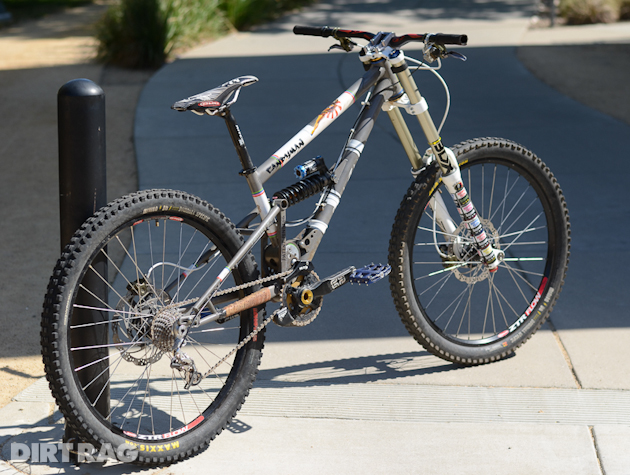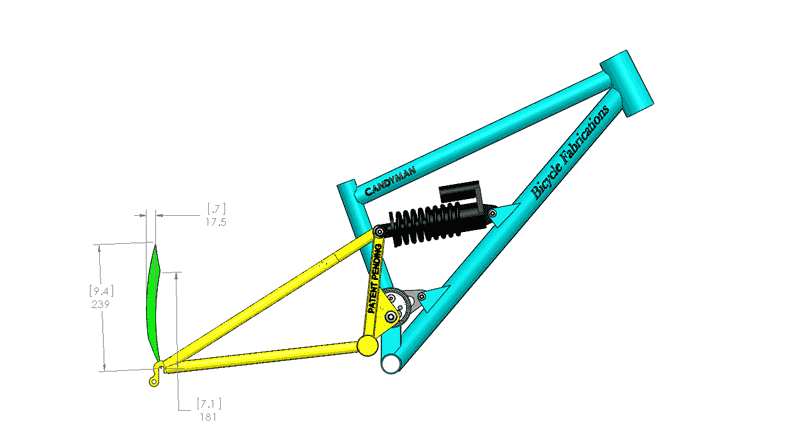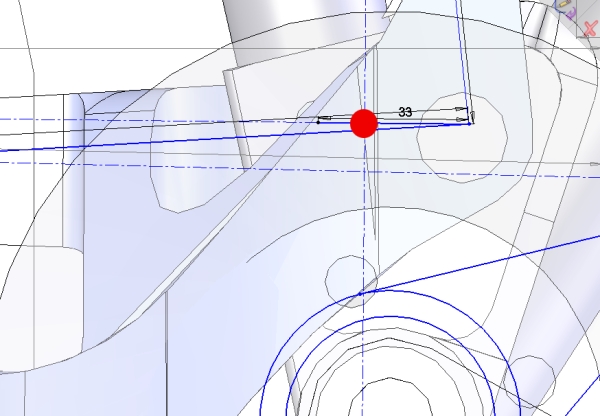Hank Matheson from Bicycle Fabrications let Dirt Rag take the wraps off his wild new “2D” suspension system today, and bravo. It’s sufficiently bizarre to have warranted the cloak and dagger. I love that it’s part homage to the old Cannondale Gemini DH frame, and that it’s legitimately something completely different.
Matheson developed it with engineer John Heim, and the truly unique thing about it is the axle path–or really axle paths. The suspension moves vertically, but it also moves horizontally. Square-edged hits allow the rear triangle to kick backward up to 19mm. The whole thing pivots on a large eccentric, so essentially it’s a single pivot on a pivot. The large eccentric onto which the swingarm pivot mounts can rock backward, and that motion’s controlled by a giant elastomer.
I have to admit I’m always a little envious of DH frames because there’s just so much you can do with them. You just don’t have the same chain growth and gear combination concerns.
Today’s Danzig detail deals with instant centers and gear combinations. Draw a line through the pivots of each of your rockers, find the place where those two imaginary lines cross paths, and you have your instant center. Unlike a single-pivot frame that has a fixed instant center, frames with multiple pivots have instant centers that move around. Where that instant center is relative to the chain you’re pulling along between your chainring and whatever cog you’re in dictates how the suspension behaves. Here it gets a little hairy, but the bottom line is that it’s desirable to build a happy relationship between that instant center point and the “line of torque,” i.e. your chain.
A key aspect of the Danzig design is the position of the lower link and how it affects that moving instant center’s relationship with the chain. Danzig’s lower link is basically the mirror opposite of every other lower link orientation out there. This orientation doesn’t just put the instant center right on the line of torque. The way the pivot rotates actually tracks alone with the line of torque as your wheel raises.
Clear as mud, right? For now, here’s the resting point of the instant center (the red dot). Next, I’ll blow out some other drawings so we can look at where it goes when the suspension is compressed and why I worked hard to get it to do that.




Sorry, the comment form is closed at this time.